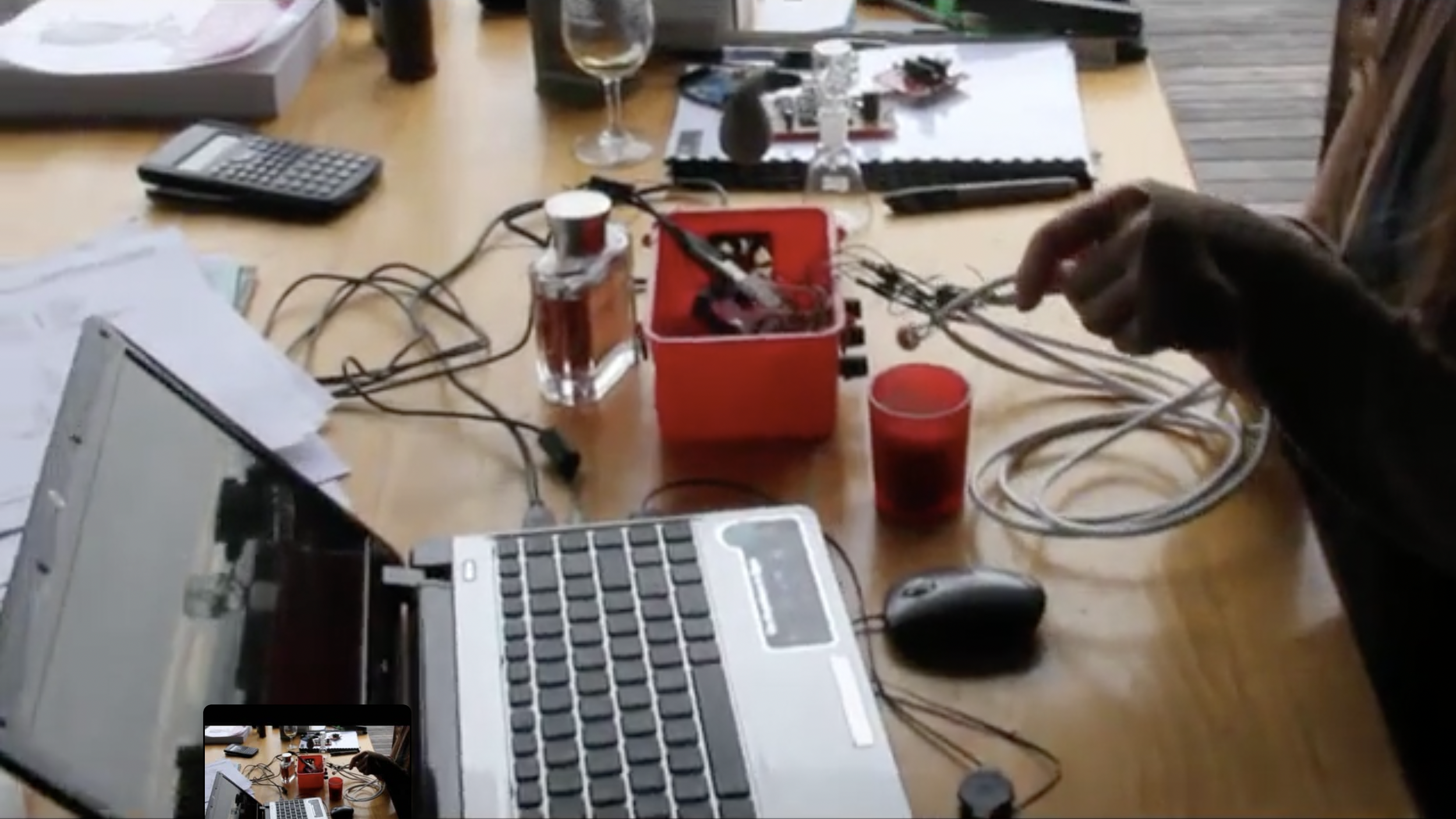What Do Humans Smell of ?
October 9 2011. I'm investigating the smog of humans...the unconscious smell of I am . This is towards sensing the human plume which carries the remnants of human emotions and the labour of the body.
From : Measuring Smells Haddad, Lapid, Harel, Sobel "How do the olfactory molecules do their business? ... raises the possibility of generating an olfactory metric using an external odour measuring device, regardless of the device’s mode of action…to summarize, to date there is no agreed-upon olfactory metric that enables universal odorant comparison".....
In October 2011 I'll be doing an artist residency at Monell science centre, dedicated to interdisciplinary research on the senses of taste and smell in Philadelphia. My time at Monell will be of great benefit to my research into unconscious sensing of human smell signatures for art works that test new ideas in cross-sensory olfactory perception.My trip is assisted by a Fulbright Award
Together with Brian Harris assisted by Chris Davison we're making a device that will breathe in the smell of and around humans, the general atmosphere that humans breath in which resides within them, and express those vapours as piano chords.
Brian Harris has been creating computer controlled and embedded devices for motion picture cameras and other special projects for the local and international film industry in his workshop for 30 years. He has a science and electronics background. An independent designer, he creates large scale finely tuned adaptive mechatronics and bespoke equipment. His inventions for motion control, stabilising camera mounts for aerial photography and robotic trajectories have been used in local and international tv, commercial and film productions.
The device will take in olfactory molecules through 4 sensors. Rather than trying to isolate each smell from its background, the VOC volatile organic compound sensors we chose are ones used in air quality control, ferment process control, industry, and in breathalysers. We're using metal oxide detectors to detect CO, Co2, Alcohol and Hydrocarbon, which will also respond to vapours other than the ones they're intended for.
I hope to expand my experiment to include specific human smell signatures, although what is implied from recent findings about our olfactory sense is that each person’s ability to smell is different--as individual as a fingerprint. Unlike sensory material for the eyes and the ears each individual’s array of olfactory receptors is determined by their genes; olfactory interpretation will be genetically swayed by what is received/perceived.
The experiment is to sample and process the anthro-, geo-, bio- and synthetic smell environment as a whole; the transparency of fences is afforded by small glimpses in between the palings while in motion, giving a view of the whole scene hidden from view. Interrupted olfaction.....
I’m investigating the human as a sensing instrument: The whole of nature is communicating with smell as are we.
So what do humans smell of?
According to Professor Jim Al-Khalili in The Secret Life of Chaos, a BBC Documentary humans are mainly made of Air , Water, Coal and Chalk plus a few other minerals. As well as this many new synthetic flavours and fragrances are being created from novel materials which may be taken up into the human body and expressed in the human plume.
To select which materials I should use for the smells of Air , Water, Coal and Chalk I made a diagram linking them together in a hydrologic system of transpiration and evaporation of the water cycle.
Water evaporates into the AIR (along with gases which produce steam and Co2 and heat during combustion kerosene, hydrocarbons, petrol, natural gas, solvents, parrafin, LPG, from the surface of the sea)..is precipitated in the raindrop which falls to earth on the land and plants, creating COAL which is the remains of trees and plants on land over millions of years. Coal when combusted creates carbon monoxide and is found compressed under the earth as CHALK, the remains of the shells and skeletons of millions of creatures over millions of years is found compressed under the ocean --and which produces CO2 when acidified, and is mainly in the seaWATER which has the ability to change consciousness along with alcohol, ethanol, scent, flavour, medicines, tinctures, marker pens and hand sanitising gels.
air = gases and the effects of combusted hydrocarbon in the air
water = alcohol--ability to change human consciousness
chalk = calcium carbonate…; When mixed with acidic sea water forms carbonic acid that has a corrosive effect on the shells of sea creatures.
coal = humans need energy ----from the industrial revolution energy from the consumption of hydrocarbons has increased the levels of co2 in the atmosphere; when coal and fossil fuels are burned they produce co2 and heat
To enable me to calibrate each machine so that the sounds it makes will be tuned at a particular audio frequency, I sang the visual/audio pitch that I experience in my body in response to the smells.
I'll tune the sounds to midi piano notes similar to those of Eric Satie's Ogive No 2 which he wrote without bar-lines.
Big thankyou for support from Fulbright NZ and CoLab





